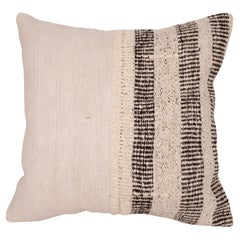Silk Turkish Rugs
Mid-20th Century Turkish Kilim Silk Turkish Rugs
Silk, Hemp
Vintage Turkish Silk Rugs for Sale on 1stDibs: Shop Hereke Silk Rugs, Handmade Turkish Silk Kilims and Other Rugs
Antique and vintage Turkish rugs, with their ruby reds and misted blues, their entwined botanical designs and rhythmic geometries, are as beloved today as they were in the 13th century, when the Turks of the Seljuk Empire began weaving these vibrant carpets in Anatolia. The styles and different types of Turkish rugs are defined both by weaving method and region, city or village of origin. Silk Turkish rugs are a popular iteration of these cherished textiles.
A Turkish rug is simply one made in Turkey or the former Ottoman empire, employing the region’s unique traditional methods and weaves. Varieties range from flat-woven kilims to lush knotted rugs, known as hali, many of which are created with Ghiordes, or Turkish, knots. Whereas in other knots, the weft (crosswise) yarn is wrapped around one warp (lengthwise) yarn, in Ghiordes knots, it is wrapped around two, imparting lushness and durability. In addition to knotting techniques, Turkish rugs differ in their motifs — naturalistic or stylized, geometric or figurative — which often reflect the region where they were made.
The main types of Turkish rugs, as Milan-based carpet dealer Alfredo Levi explains it, are kilim, typified by a plain slit-tapestry weave, which leaves a gap, or slit, between sections woven with different yarns in different colors; sumak, made with weft wrapping, for a sturdier flat-woven carpet; and cicim, which he describes as “a type of sumak with extra brocade techniques typical of the tribes and villages of central Anatolia.
Within each type, there are various regional styles. Among these are Bergama carpets, characterized by bright reds and strong medallions; thick-piled Tulu rugs; and Konya rugs, which Marco Polo is said to have called “the most beautiful in the world.”
Also treasured are Oushak (or Ushak) rugs, with their complex, intricate designs and warm earth tones of saffron, cinnamon, blue, ivory and gold; and Hereke carpets, originally created exclusively for Ottoman sultans, using the finest silk. Still made in the coastal Turkish town of Hereke, these woven jewels — with their exquisite, highly intricate floral patterns crafted from wool, cotton and silk and frequently enhanced with gold and silver threads — are much sought-after by collectors and decorators the world over.
For Jason Nazmiyal, of New York carpet dealer Nazmiyal Antique Rugs, “a good Turkish rug is when the colors are harmonious.” This is true of both modern and antique Turkish rugs, but the hues have changed over the centuries, thanks to both technology and changes in culture and taste.
The best carpets are woven or knotted using the classic Ghiordes knot and made from wool, cotton, camel or other animal hair or — in the most luxurious examples — silk.
Find antique and vintage Turkish silk rugs for sale on 1stDibs. At The Study, read about how to take care of your antique or vintage rug as well as how to choose the right rug for your space.
